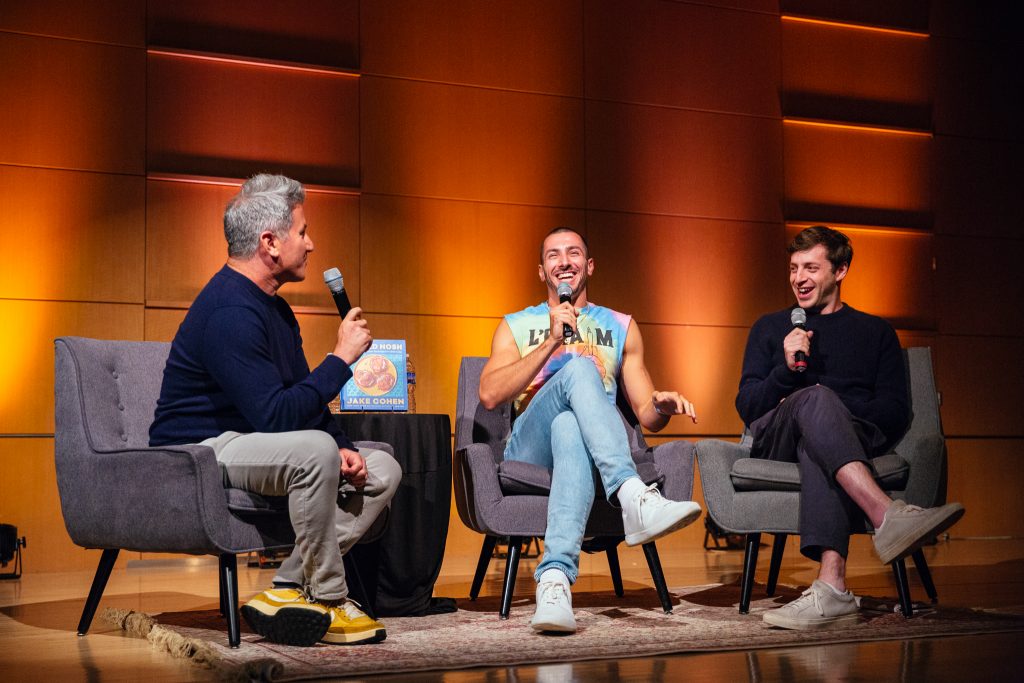There’s a saying that history isn’t just something you learn—it’s something you feel. Every May, Jewish American Heritage Month (JAHM) offers that kind of immersive experience: a chance to reflect, celebrate, and understand how Jewish life has shaped and been shaped by America. In a time of unprecedented antisemitism and division, JAHM feels less like a commemorative month and more like a necessary civic reset—one powered by stories of resilience, creativity, and contribution.
At the forefront of this national effort is the Weitzman National Museum of American Jewish History in Philadelphia, the country’s only museum solely dedicated to exploring and sharing the breadth of American Jewish experience, from the dawn of our nation to the present day. The Weitzman celebrates this mission every day through exhibitions, education, and events, and each May, it leads the national JAHM initiative with the support of committed funders and a coalition of partner organizations across the country.
JAHM is more than a calendar of events—it’s a call to curiosity and connection. The official JAHM website—JewishAmericanHeritage.org—is your launchpad for learning, teaching, and exploring. Dive into a vibrant mix of stories, playlists, podcasts, and recipes that reflect the full spectrum of Jewish American life. Whether you’re an educator seeking fresh classroom materials, a culture lover chasing your next obsession, or simply curious about how Jewish identity shapes—and is shaped by—American ideals, JAHM offers something to spark every mind.
While Jewish Americans’ contributions range from Broadway to the Supreme Court, from restaurants to research labs, JAHM also helps demystify what it means to be Jewish. In a moment when myths and misinformation about Jews abound, knowledge, grounded in truth, complexity, and humanity, is more vital than ever.

A Resource for Educators
One of JAHM’s most powerful tools is its curated collection of classroom-ready materials. Teachers across the country will find downloadable lesson plans, primary sources, classroom-ready multimedia presentations, historical overviews, and professional learning resources.
The site includes expertly curated resources from premier national organizations like the Weitzman National Museum of American Jewish History, the Institute for Curriculum Services, Jewish Women’s Archive, the New York Public Library, and Facing History and Ourselves, among many other leading national educational institutions. Together, the members of the national JAHM partnership coalition offer content that spans multiple grade levels and subject areas — from music and literature to civil rights history and social-emotional learning.
For example, teachers can introduce middle school students to the Jewish immigrant experience through archival documents and oral histories. High schoolers can analyze Supreme Court cases shaped by Jewish justices. Art teachers might explore Jewish contributions to American cinema, while music educators can feature songs by Jewish composers who helped define the American sound.
“Education is how we build understanding,” said Rebecca Krasner, Director of Education at The Weitzman. “And understanding is how we dismantle stereotypes and reduce hate.”
Heritage in Every Form: Read, Watch, Listen, Make
For those who prefer their inspiration on-demand, the Read • Watch • Listen • Make section of the Jewish American Heritage Month website is a cultural rabbit hole worth falling into. American Jews come from a wide range of racial, ethnic, and cultural backgrounds — a fact that is sometimes overshadowed by monolithic portrayals. JAHM amplifies this diversity. Think compelling profiles, gripping podcasts, tasty recipes, and handpicked playlists that reveal the layered, often surprising stories of Jewish life in America. Whether through a culinary exploration of Persian Jewish dishes or a digital short film about Black Jewish identity, JAHM helps broaden public understanding of who Jewish Americans are and have always been. It’s perfect for a curious scroll or a deep dive into identity, resilience, and joy.
Here, too, national and local partners—like Jewtina y Co. and the Lunar Collective—offer content that explores what it means to be Jewish in intersectional and expansive ways.
Culture as a Bridge?
While JAHM is rooted in history, it’s equally alive with creativity. Each year, museums, community centers, and local governments host concerts, exhibitions, and dance performances that bring Jewish culture to life. In 2025, Los Angeles joins Philadelphia as a featured city, presenting signature events throughout Jewish American Heritage Month. In L.A., highlights include a live MUSE/IQUE concert exploring Jewish influence on Hollywood’s golden age (May 4) and From Wizard of Oz to Wicked: Jewish Composers Who Shaped Hollywood, a new exhibition at Los Angeles City Hall. In Philadelphia—birthplace of American democracy and home to The Weitzman—programs range from the Tahini Baby cookbook launch with Eden Grinshpan and Mike Solomonov (May 8) to a Dual Heritage Family Day (May 18) celebrating both Asian American and Pacific Islander and Jewish American Heritage Months. These events are an invitation—to celebrate through joy and curiosity. They’re also a reminder that culture and connection are among our most powerful tools for countering ignorance and antisemitism.
Education as an Antidote to Hate
According to the Anti-Defamation League, antisemitic incidents in the United States have risen to historic levels in recent years. In this climate, education is not optional — it is essential.
JAHM doesn’t shy away from these challenges. Instead, it meets them with nuance and hope, offering tools to help young people understand the Jewish experience not as “other,” but as fundamentally American while valuing difference. By integrating Jewish stories into broader narratives of civil rights, immigration, civic engagement, creativity, and resilience–every genre and industry–JAHM helps share the idea that Jewish history is American history.
Visitors to the site can explore first hand testimonies, digital exhibits on American Jewish soldiers, and profiles of Jewish activists who fought for LGBTQ+ rights, labor justice, and racial equity.
“Education is the best response to hate,” said Krasner. “When students understand that Jewish Americans have always been part of this country’s fight for liberty and justice, it builds empathy and pride. They start to see themselves in the story — and that changes everything.”
An Open Invitation
At its core, Jewish American Heritage Month is about belonging. It’s about offering all Americans — Jewish and non-Jewish alike — a chance to celebrate the shared values of community, justice, religious freedom, and making the world a better place.
As new generations come of age in a world full of noise and misinformation, JAHM provides clarity and connection. Its resources help educators teach with confidence. Its events help families engage with meaning. And its stories—layered, vibrant, and complex—help us better understand what it means to be American.
Whether you’re attending a concert, planning a lesson, or simply browsing the site from your couch, JAHM welcomes you in. You can explore these and dozens of other events nationwide at JewishAmericanHeritage.org.

